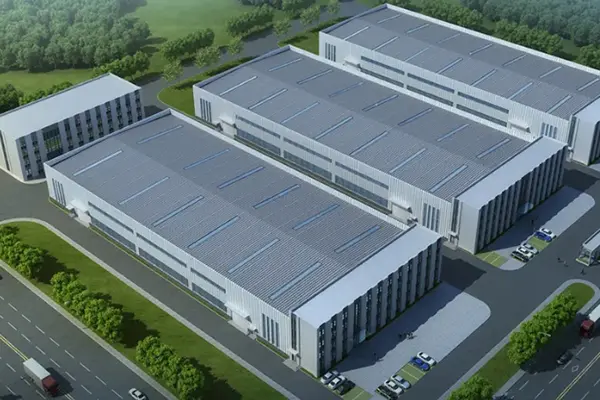A factory building is a specialized type of structure designed to house industrial operations. These operations often include manufacturing, assembly, packaging, and storage. Unlike residential or commercial buildings, factory buildings are tailored to meet the unique demands of industrial processes, requiring a combination of functionality, durability, and safety.
This article explores the key features of factory buildings, their classifications, and their importance in modern industries.
Key Features of a Factory Building
A factory building is defined by several characteristics that distinguish it from other types of structures:
- Functional Layout:
Factory buildings are designed with a focus on workflow efficiency. The layout typically includes designated areas for production lines, storage, offices, and employee facilities. The arrangement minimizes unnecessary movement of materials and workers, optimizing productivity. - Large Space and High Ceilings:
To accommodate machinery, equipment, and operations, factory buildings often feature expansive floor areas and high ceilings. This allows for flexibility in arranging equipment and managing large-scale operations. - Robust Construction:
The materials used in constructing a factory building—such as steel, concrete, and reinforced walls—are chosen for their ability to withstand heavy loads, vibrations, and wear over time. The structure is also designed to support the weight of machinery and materials. - Ventilation and Lighting:
Proper ventilation systems, including exhausts and fans, are crucial in factory buildings to ensure air circulation, especially in environments where fumes or heat are generated. Ample natural or artificial lighting is also essential to maintain safe and efficient working conditions. - Safety Provisions:
Safety is a top priority in any factory building. Features like fire exits, sprinkler systems, anti-slip flooring, and marked emergency routes are standard. Compliance with local safety regulations ensures the well-being of workers and the protection of assets.

Types of Factory Buildings
Factory buildings can vary widely depending on the industry, the processes involved, and the scale of operations. Below are some common types:
- Single-Storey Factory Buildings:
These are the most common type of factory buildings, particularly for industries requiring large machinery or extensive production lines, such as automobile manufacturing. Single-story layouts provide unobstructed space for equipment and materials handling. - Multi-Storey Factory Buildings:
These buildings are often found in urban or space-constrained areas. Industries such as textiles or electronics manufacturing may use multi-story factory buildings, with processes organized by floors to optimize space. - Open-Span Factory Buildings:
Open-span buildings feature wide, column-free spaces to accommodate specific industries like aerospace or heavy equipment manufacturing. The absence of columns allows for better maneuverability of machinery and materials. - Specialized Factory Buildings:
Certain industries, such as pharmaceuticals or food processing, require factory buildings with specialized features like clean rooms, climate control, or contamination-free zones to meet stringent production standards.
Importance of Factory Buildings
Factory buildings play a crucial role in modern industrialization and economic development. They serve as hubs for innovation, production, and employment, supporting various industries and supply chains.
- Centralized Operations:
A well-designed factory building consolidates all aspects of production—from raw material processing to finished goods storage—under one roof. This centralization improves efficiency and reduces operational costs. - Scalability and Adaptability:
Factory buildings are often constructed to be adaptable to changing production needs. With advancements in automation and technology, many factories incorporate modular designs, allowing for easy expansion or reconfiguration. - Worker Productivity and Safety:
A thoughtfully designed factory building contributes to worker satisfaction and productivity. Features like ergonomic workspaces, proper lighting, and safety measures create a conducive environment for efficient operations. - Environmental Considerations:
Modern factory buildings are increasingly adopting sustainable practices, such as energy-efficient designs, solar power integration, and eco-friendly materials. These efforts reduce environmental impact and align with global sustainability goals.
Examples of Factory Buildings
- Traditional Factories: Large industrial complexes like car manufacturing plants or steel mills exemplify traditional factory buildings with robust infrastructure and extensive layouts.
- Modern Smart Factories: Equipped with automation, robotics, and IoT technology, smart factories represent the future of factory buildings, emphasizing efficiency, sustainability, and innovation.
- Cottage Industry Factories: Smaller factory buildings catering to local or artisanal industries, such as food production or handicrafts, serve niche markets and community needs.
Conclusion
A factory building is more than just a physical structure; it is the backbone of industrial production and economic growth. Its design and functionality are tailored to meet the specific demands of manufacturing, ensuring efficiency, safety, and adaptability. As industries evolve, factory buildings continue to incorporate advanced technologies and sustainable practices, playing a pivotal role in shaping the future of global production.
Post time: Nov-21-2024



